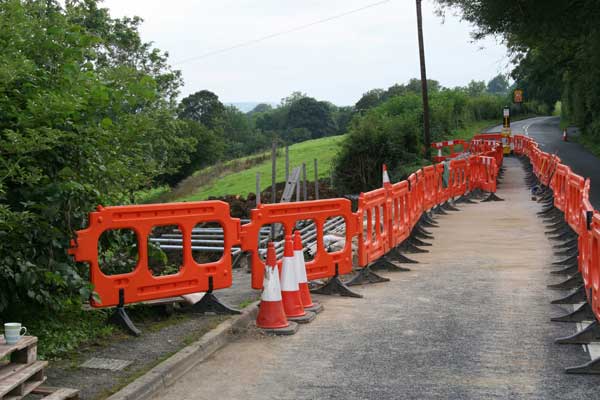By Mandy Bretherton | 1 June 2011
The true value of council roads and bridges is currently tricky to determine, hence the move from historical to current cost accounting
 By far the biggest capital asset that the UK public sector holds is local authority transport infrastructure assets. However, information on its worth, condition and maintenance requirements is often limited. In today’s financial climate, when all spending must be fully justified, this information is more important than ever. For example, there is a perception that insufficient money is being spent on maintaining our transport infrastructure – but this is not backed up by robust, consistent information.
By far the biggest capital asset that the UK public sector holds is local authority transport infrastructure assets. However, information on its worth, condition and maintenance requirements is often limited. In today’s financial climate, when all spending must be fully justified, this information is more important than ever. For example, there is a perception that insufficient money is being spent on maintaining our transport infrastructure – but this is not backed up by robust, consistent information.
Currently, infrastructure assets are valued at historical cost, which neither represents a realistic value nor helps authorities with their asset management planning. The CIPFA Code of Practice on Transport Infrastructure Assets, published in March 2010, addresses these issues by providing a phased move to a current cost methodology.
This will mean that for Whole of Government Accounts purposes these assets will be valued at modern equivalent asset replacement less deductions for all physical deterioration and impairment.
The code has not been introduced solely to provide more robust information for financial reporting. A key principle is that the same data should be capable of serving the needs of asset management, maintenance planning, budgeting and financial management. This means that the financial information – underpinned by good quality inventories, cost and condition information – will better support decision making and the provision of efficiency savings through effective and informed asset management planning.
Under the phased introduction, 2009/10 was the first year that highways authorities were required to include elements of this information in WGA returns. The minimum requirement was for carriageways’ gross replacement costs to be calculated. In theory, this should have been a relatively simple task, requiring the length of road to be multiplied by the central rates provided on the CIPFA supporting materials website. Analysis of the returns showed that a small number of authorities failed to complete the information at all. Of those who did, some managed to make fundamental errors. The spreadsheets have now been altered to reduce the potential for error in the future.
The requirement is greater for 2010/11, with the expectation that more Depreciated Replacement Cost data will be provided as the implementation progresses. CIPFA is developing a toolkit for the 2011/12 returns that will calculate the DRC information for structures such as bridges. That year will also see the first fully audited dry run of information for WGA, with full implementation in 2012/13.
The DRC for carriageways can be generated by a report from the UK Pavement Management System, which all authorities already use for national reporting. This is also a valuable tool for assessing and prioritising road maintenance based on condition. Many councils use this effectively in delivering the principles of Asset Management in their annual road maintenance programmes. The system uses road information such as length, width and condition to calculate the accumulated depreciation. All authorities should either have a system or access to one to extract the required depreciation totals.
For financial reporting, the information will initially be included in the WGA reporting. However, the body that oversees the development of the Code of Practice on Local Authority Accounting in the United Kingdom – the CIPFA/ Local Authority Scotland Accounts Advisory Committee – is keeping a watchful eye in relation to potential inclusion in local authority accounts in due course.
There are a number of things that local authorities should be doing to prepare for full implementation. The main one is the requirement for information in relation to the assets. This includes basic, readily available data, such as length of road, coupled with width, condition and information about other asset types. Surveys or sample surveys might need to be scheduled to ensure that the appropriate information is available at the right time. Some information might need to be gathered for the first time such as on footways, street lighting and street furniture.
It is crucial that finance staff and engineers talk to each other to ensure that the information the engineer plans to provide meets the requirements of the finance staff.
The prize, however, will be worth it. The information will not only ensure our infrastructure assets are valued on a consistent and meaningful basis, it will help to ensure that our assets are managed effectively. In these times of severe austerity, any developments that lead to more savings and better use of resources should be welcomed.
Mandy Bretherton is the technical manager for local government finance at CIPFA
The true value of council roads and bridges is currently tricky to determine, hence the move from historical to current cost accounting
 By far the biggest capital asset that the UK public sector holds is local authority transport infrastructure assets. However, information on its worth, condition and maintenance requirements is often limited. In today’s financial climate, when all spending must be fully justified, this information is more important than ever. For example, there is a perception that insufficient money is being spent on maintaining our transport infrastructure – but this is not backed up by robust, consistent information.
By far the biggest capital asset that the UK public sector holds is local authority transport infrastructure assets. However, information on its worth, condition and maintenance requirements is often limited. In today’s financial climate, when all spending must be fully justified, this information is more important than ever. For example, there is a perception that insufficient money is being spent on maintaining our transport infrastructure – but this is not backed up by robust, consistent information.Currently, infrastructure assets are valued at historical cost, which neither represents a realistic value nor helps authorities with their asset management planning. The CIPFA Code of Practice on Transport Infrastructure Assets, published in March 2010, addresses these issues by providing a phased move to a current cost methodology.
This will mean that for Whole of Government Accounts purposes these assets will be valued at modern equivalent asset replacement less deductions for all physical deterioration and impairment.
The code has not been introduced solely to provide more robust information for financial reporting. A key principle is that the same data should be capable of serving the needs of asset management, maintenance planning, budgeting and financial management. This means that the financial information – underpinned by good quality inventories, cost and condition information – will better support decision making and the provision of efficiency savings through effective and informed asset management planning.
Under the phased introduction, 2009/10 was the first year that highways authorities were required to include elements of this information in WGA returns. The minimum requirement was for carriageways’ gross replacement costs to be calculated. In theory, this should have been a relatively simple task, requiring the length of road to be multiplied by the central rates provided on the CIPFA supporting materials website. Analysis of the returns showed that a small number of authorities failed to complete the information at all. Of those who did, some managed to make fundamental errors. The spreadsheets have now been altered to reduce the potential for error in the future.
The requirement is greater for 2010/11, with the expectation that more Depreciated Replacement Cost data will be provided as the implementation progresses. CIPFA is developing a toolkit for the 2011/12 returns that will calculate the DRC information for structures such as bridges. That year will also see the first fully audited dry run of information for WGA, with full implementation in 2012/13.
The DRC for carriageways can be generated by a report from the UK Pavement Management System, which all authorities already use for national reporting. This is also a valuable tool for assessing and prioritising road maintenance based on condition. Many councils use this effectively in delivering the principles of Asset Management in their annual road maintenance programmes. The system uses road information such as length, width and condition to calculate the accumulated depreciation. All authorities should either have a system or access to one to extract the required depreciation totals.
For financial reporting, the information will initially be included in the WGA reporting. However, the body that oversees the development of the Code of Practice on Local Authority Accounting in the United Kingdom – the CIPFA/ Local Authority Scotland Accounts Advisory Committee – is keeping a watchful eye in relation to potential inclusion in local authority accounts in due course.
There are a number of things that local authorities should be doing to prepare for full implementation. The main one is the requirement for information in relation to the assets. This includes basic, readily available data, such as length of road, coupled with width, condition and information about other asset types. Surveys or sample surveys might need to be scheduled to ensure that the appropriate information is available at the right time. Some information might need to be gathered for the first time such as on footways, street lighting and street furniture.
It is crucial that finance staff and engineers talk to each other to ensure that the information the engineer plans to provide meets the requirements of the finance staff.
The prize, however, will be worth it. The information will not only ensure our infrastructure assets are valued on a consistent and meaningful basis, it will help to ensure that our assets are managed effectively. In these times of severe austerity, any developments that lead to more savings and better use of resources should be welcomed.
Mandy Bretherton is the technical manager for local government finance at CIPFA



















